#folklore and religion notes
Text
Thinking about how scared Nikolai must've been as a child after he first decided to go against God considering the Viy was a part of his childhood and the only way people ever escaped from it was through God's help... which he was guaranteed he'd never receive after committing to that path
#muse: nikolai gogol.#salt don't look#religion /#^ Kind of? since Gogol was Christian and clearly so is BSD Nikolai#BUT YEA if you google illustrations for the Viy and/or read Gogol's story about it it's so yiiikes!#No wonder Nikolai has no fears anymore at this point in time. How could he when he got over the worst of them ages ago#I was originally thinking it might've been an Ability of sb from his village but then I remembered Lovecraft exists...#and then I immediately discarded that idea. ADHSAJJSAKD I'll probably be keeping these creatures from Gogol's works#as actual; genuine creatures unrelated to any sort of Ability; just like Lovecraft is a bona fide eldritch horror#(This must sound so funny to anyone who doesn't know BSD)#so yeah! do NOT visit his hometown. or even his home region. That place's about as scary and eerie as he himself is#...which I might meta about actually. what sort of influence his hometown folklore and creatures (and irl works) had on his identity#bc his jester persona IS very similar to some of the charas from Gogol's horror works; such as Basavriuk and the witches#On this note I think he kiIIed his parents before leaving Ukraine bc that'd be the first relationship he'd have to sever for his goals#and you can already imagine his neighbours must've thought he got possessed by one of the 'evil spirits' he kept talking about#The people from his hometown might as well hear his name and immediately shudder </3
4 notes
·
View notes
Photo


#studyblr#notes#folklore#folklore notes#world religions#world religions notes#world beliefs#religion#religions of the world#zodiac#zodiac signs#zodiac dates#dates of zodiac signs
7 notes
·
View notes
Text
I headcanon that writing Nikolai should (almost) always be exceedingly fun. And if it isn't, there's something deeply wrong with your story.
#note that this applies to most of my works#I don't have nearly as much fun with him as I should and it shows#but I'm getting better#a lot of it is thanks to all the biographies of Gogol and short stories I've read#I feel like both are almost required to get a good sense of Nikolai as a character#or you could just be really good at characterisation#then you can skip the biographies entirely#the short stories though#there's no getting around them#you absolutely need them to craft an interesting world and worldview around Nikolai#though if you're like me you won't get much out of them without reading the biographies#and picking up some Slavic folklore#and history#and religion#if you can maybe just take a whole Russian lit course#and learn Russian#then you'll be golden#or so I assume#maybe also top it off with The Master and Margarita if you're like me and need a more literal and easy to follow example of surrealism#it's a good roadmap#bsd#bsd nikolai#writing#thoughts
0 notes
Text
Ok I get where everyone is coming from when they see the design of Pavitr ‘Pav’ Prabhakar aka Indian SpiderMan as an expression of gender queerness, but let me be frank this is very typical Indian male costuming.
Even the toxic masculine patriarchal men have similar stylistic expressions or to be be more precise this is a traditional/historical/ye olde male aesthetic.
Having said that I love what design elements are being used here. So…
Let's take it from the top.
The FACE MASK

The Three Colors surrounding the eyes are typical spider man colours but they are done to evoke the image the traditional makeup done for the ancient dance art Kathakali. In which the whole face is painted and bold lines are drawn to emphasise/exaggerate the eyes. These eye mask lines are usually thin - bold-thin.
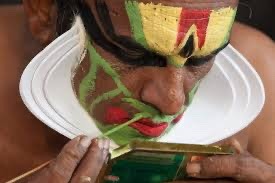
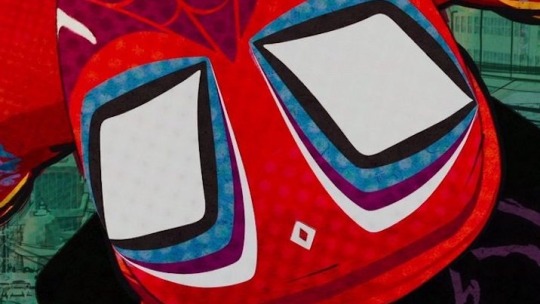

Same with the white lines on the cheek bones which are indicative of tusks or pincers of demons or Animorphs in folklore/myths.



The white dot in the centre of the forehead is the most common Hindu motif, expressed in myriad of ways all over the country .
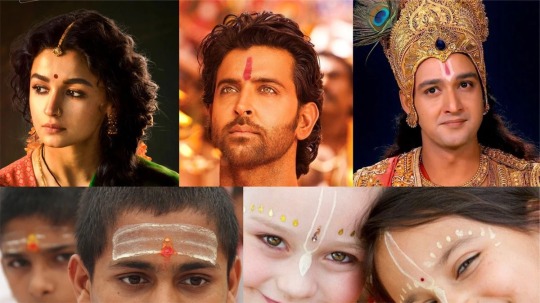
The ARM/LEG BANDS/CUFFS

The bicep cuff is a part of Indian historic armour - made of malleable metal, its bejewelled ornate counterparts were then worn in day to day life. Here in the north Royals still wear it during big ceremonies. These metal bands are generally worn by warriors.
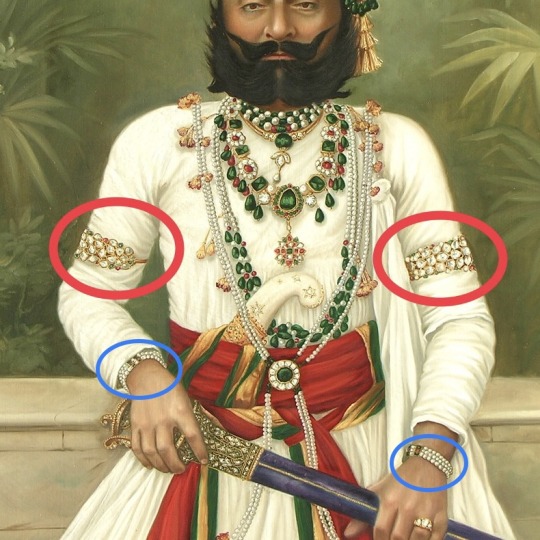

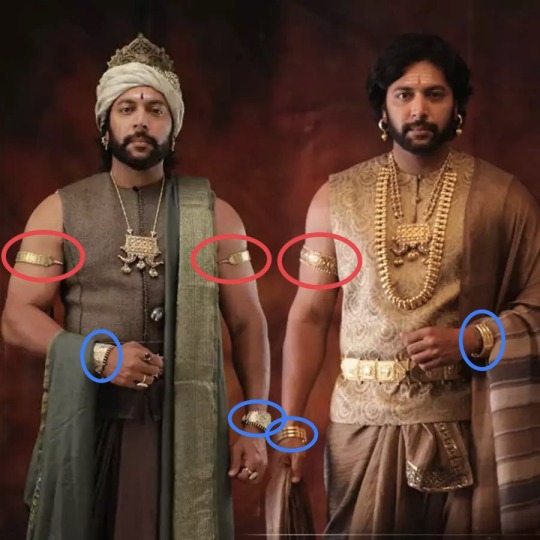
bangles (metal circles worn at wrists) are an important male accessory and are more daily wear even in present modern times, some religions (Sikh,Jain etc.) require the males to always wear one at all times. The ones on the suit were more in the shape of wrist guards which again were an armour accessory. In Indian male clothing the cuffs are usually emphasised.

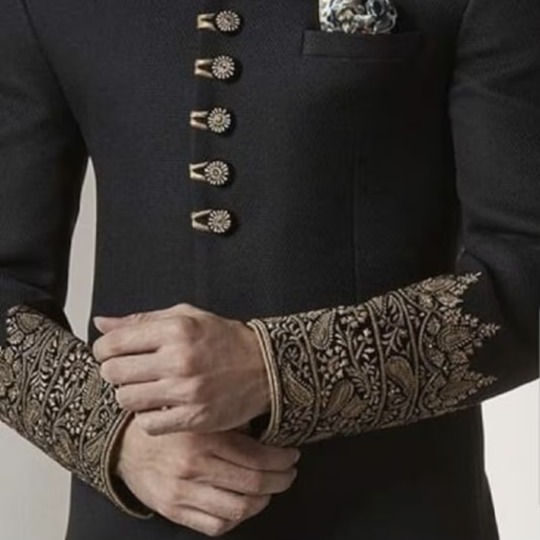
Due to traditional male footwear being sandals metal ankle cuffs were employed to guard the shins and were worn during wars while thinner bands - ornamental accessories - were worn in daily wear.
There are so many other things I want to elaborate on like: The PATTERNS/LOGO,The LEG GARMENT (??!)(what’s the collective term for clothes for legs?), The Cat’s Cradle swinging/body animation ; but my ADHD is already acting up so imma leave this here.
SIDE NOTE:
I love how the heel and toes are bare in this design. It makes sense from the spider powers perspective - no barrier in contact allows for better manoeuvring and jump control as is seen in gymnastics. But also because in Hindu culture important tasks including some traditional sports require the removal of footwear and getting feet dirty is not discouraged (of course with an adherence to washing of the feet multiple times in a day)
I also loved how incorporated his wrist guard is in his spider style using it as a toy and a tool. This aspect of making use of something in a completely different way was so desi ‘Jugaad’ I was stunned.
#spiderman atsv#across the spiderverse#pavitr prabhakar#desi#design#letting my inner design nerd out#Indian warfare was my special interest#If you haven’t guessed by now#astv#desi experience#sony spiderverse#into the spider verse#Desi spiderman#indian spiderman
9K notes
·
View notes
Text
Sri Lankan Fairies and Senegalese Goddesses: Mixing Mythology as a Mixed Creator
[Note: this archive ask was submitted before the Masterpost rules took effect in 2023. The ask has been abridged for clarity.]
@reydjarinkenobi asked:
Hi, I’m half Sri Lankan/half white Australian, second gen immigrant though my mum moved when she was a kid.
My main character for my story is a mixed demigod/fae. [...] Her bio mum is essentially a Scottish/Sri Lankan fairy and her other bio mum (goddess) is a goddess of my own creation, Nettamaar, who’s name is derived from [...] Wolof words [...]. The community of mages that she presided over is from the South Eastern region of Senegal [...] In the beginning years of European imperialism, the goddess basically protected them through magic and by blessing a set of triplets effectively cutting them off from the outside world for a few centuries [...]
I was unable to find a goddess that fit the story I wanted to tell [...] and also couldn’t find much information on the internet for local gods, which is why I have created my own. I know that the gods in Hinduism do sort of fit into [the story] but my Sri Lankan side is Christian and I don’t feel comfortable representing the Hindu gods in the way that I will be this goddess [...]. I wanted to know if any aspect of the community’s history is problematic as well as if I should continue looking further to try and find an African deity that matched my narrative needs?
I was also worried that having a mixed main character who’s specifically half black would present problems as I can’t truly understand the black experience. I plan on getting mixed and black sensitivity readers once I finish my drafts [...] I do take jabs at white supremacy and imperialism and I I am planning to reflect my feelings of growing up not immersed in your own culture and feeling overwhelmed with what you don’t know when you get older [...].
I’m sorry for the long ask but I don’t really have anyone to talk to about writing and I’m quite worried about my story coming across as insensitive or problematic because of cultural history that I am not educated enough in.
Reconciliation Requires Research
First off: how close is this world’s history to our own, omitting the magic? If you’re aiming for it to be essentially parallel, I would keep in mind that Senegal was affected by the spread of Islam before the Europeans arrived, and most people there are Muslim, albeit with Wolof and other influences.
About your Scottish/Sri Lankan fairy character: I’ll point you to this previous post on Magical humanoid worldbuilding, Desi fairies as well as this previous post on Characterization for South Asian-coded characters for some of our commentary on South Asian ‘fae’. Since she is also Scottish, the concept can tie back to the Celtic ideas of the fae.
However, reconciliation of both sides of her background can be tricky. Do you plan on including specific Sri Lankan mythos into her heritage? I would tread carefully with it, if you plan to do so. Not every polytheistic culture will have similar analogues that you can pull from.
To put it plainly, if you’re worried about not knowing enough of the cultural histories, seek out people who have those backgrounds and talk to them about it. Do your research thoroughly: find resources that come from those cultures and read carefully about the mythos that you plan to incorporate. Look for specificity when you reach out to sensitivity readers and try to find sources that go beyond a surface-level analysis of the cultures you’re looking to portray.
~ Abhaya
I see you are drawing on Gaelic lore for your storytelling. Abhaya has given you good links to discussions we’ve had at WWC and the potential blindspots in assuming, relative to monotheistic religions like Christianity, that all polytheistic and pluralistic lore is similar to Gaelic folklore. Fae are one kind of folklore. There are many others. Consider:
Is it compatible? Are Fae compatible with the Senegalese folklore you are utilizing?
Is it specific? What ethnic/religious groups in Senegal are you drawing from?
Is it suitable? Are there more appropriate cultures for the type of lore you wish to create?
Remember, Senegalese is a national designation, not an ethnic one, and certainly not a designation that will inform you with respect to religious traditions. But more importantly:
...Research Requires Reconciliation
My question is why choose Senegal when your own heritage offers so much room for exploration? This isn’t to say I believe a half Sri-Lankan person shouldn’t utilize Senegalese folklore in their coding or vice-versa, but, to put it bluntly, you don’t seem very comfortable with your heritage. Religions can change, but not everything cultural changes when this happens. I think your relationship with your mother’s side’s culture offers valuable insight to how to tackle the above, and I’ll explain why.
I myself am biracial and bicultural, and I had to know a lot about my own background before I was confident using other cultures in my writing. I had to understand my own identity—what elements from my background I wished to prioritize and what I wished to jettison. Only then was I able to think about how my work would resonate with a person from the relevant background, what to be mindful of, and where my blindspots would interfere.
I echo Abhaya’s recommendation for much, much more research, but also include my own personal recommendation for greater self-exploration. I strongly believe the better one knows oneself, the better they can create. It is presumptuous for me to assume, but your ask’s phrasing, the outlined plot and its themes all convey a lack of confidence in your mixed identity that may interfere with confidence when researching and world-building. I’m not saying give up on this story, but if anxiety on respectful representation is a large barrier for you at the moment, this story may be a good candidate for a personal project to keep to yourself until you feel more ready.
(See similar asker concerns here: Running Commentary: What is “ok to do” in Mixed-Culture Supernatural Fiction, here: Representing Biracial Black South American Experiences and here: Am I fetishizing my Japanese character?)
- Marika.
Start More Freely with Easy Mode
Question: Why not make a complete high-fantasy universe, with no need of establishing clear real-world parallels in the text? It gives you plenty of leg room to incorporate pluralistic, multicultural mythos + folklore into the same story without excessive sweating about historically accurate worldbuilding.
It's not a *foolproof* method; even subtly coded multicultural fantasy societies like Avatar or the Grishaverse exhibit certain harmful tropes. I also don't know if you are aiming for low vs high fantasy, or the degree of your reliance on real world culture / religion / identity cues.
But don't you think it's far easier for this fantasy project to not have the additional burden of historical accuracy in the worldbuilding? Not only because I agree with Mod Marika that perhaps you seem hesitant about the identity aspect, but because your WIP idea can include themes of othering and cultural belonging (and yes, even jabs at supremacist institutions) in an original fantasy universe too. I don't think I would mind if I saw a couple of cultural markers of a Mughal Era India-inspired society without getting a full rundown of their agricultural practices, social conventions and tax systems, lol.
Mod Abhaya has provided a few good resources about what *not* to do when drawing heavily from cultural coding. With that at hand, I don't think your project should be a problem if you simply make it an alternate universe like Etheria (She-Ra and the Princesses of Power), Inys (The Priory of the Orange Tree) or Earthsea (the Earthsea series, Ursula K. Le Guin). Mind you, we can trace the analogues to each universe, but there is a lot of freedom to maneuver as you wish when incorporating identities in original fantasy. And of course, multiple sensitivity readers are a must! Wishing you the best for the project.
- Mod Mimi
#asks#multiracial#multicultural#south asian#sri lankan#senegalese#west african#identity#representation#worldbuilding#fantasy#mythology#folklore#fairies#deities#adoption#identity issues#mixed experiences#coding
533 notes
·
View notes
Text






JSTOR Articles on the History of Witchcraft, Witch Trials, and Folk Magic Beliefs
This is a partial of of articles on these subjects that can be found in the JSTOR archives. This is not exhaustive - this is just the portion I've saved for my own studies (I've read and referenced about a third of them so far) and I encourage readers and researchers to do their own digging. I recommend the articles by Ronald Hutton, Owen Davies, Mary Beth Norton, Malcolm Gaskill, Michael D. Bailey, and Willem de Blecourt as a place to start.
If you don't have personal access to JSTOR, you may be able to access the archive through your local library, university, museum, or historical society.
Full text list of titles below the cut:
'Hatcht up in Villanie and Witchcraft': Historical, Fiction, and Fantastical Recuperations of the Witch Child, by Chloe Buckley
'I Would Have Eaten You Too': Werewolf Legends in the Flemish, Dutch and German Area, by Willem de Blecourt
'The Divels Special Instruments': Women and Witchcraft before the Great Witch-hunt, by Karen Jones and Michael Zell
'The Root is Hidden and the Material Uncertain': The Challenges of Prosecuting Witchcraft in Early Modern Venice, by Jonathan Seitz
'Your Wife Will Be Your Biggest Accuser': Reinforcing Codes of Manhood at New England Witch Trials, by Richard Godbeer
A Family Matter: The CAse of a Witch Family in an 18th-Century Volhynian Town, by Kateryna Dysa
A Note on the Survival of Popular Christian Magic, by Peter Rushton
A Note on the Witch-Familiar in Seventeenth Century England, by F.H. Amphlett Micklewright
African Ideas of Witchcraft, by E.G. Parrinder
Aprodisiacs, Charms, and Philtres, by Eleanor Long
Charmers and Charming in England and Wales from the Eighteenth to the Twentieth Century, by Owen Davies
Charming Witches: The 'Old Religion' and the Pendle Trial, by Diane Purkiss
Demonology and Medicine in the Sixteenth and Seventeenth Centuries, by Sona Rosa Burstein
Denver Tries A Witch, by Margaret M. Oyler
Devil's Stones and Midnight Rites: Megaliths, Folklore, and Contemporary Pagan Witchcraft, by Ethan Doyle White
Edmund Jones and the Pwcca'r Trwyn, by Adam N. Coward
Essex County Witchcraft, by Mary Beth Norton
From Sorcery to Witchcraft: Clerical Conceptions of Magic in the Later Middle Ages, by Michael D. Bailey
German Witchcraft, by C. Grant Loomis
Getting of Elves: Healing, Witchcraft and Fairies in the Scottish Witchcraft Trials, by Alaric Hall
Ghost and Witch in the Sixteenth and Seventeenth Centuries, by Gillian Bennett
Ghosts in Mirrors: Reflections of the Self, by Elizabeth Tucker
Healing Charms in Use in England and Wales 1700-1950, by Owen Davies
How Pagan Were Medieval English Peasants?, by Ronald Hutton
Invisible Men: The Historian and the Male Witch, by Lara Apps and Andrew Gow
Johannes Junius: Bamberg's Famous Male Witch, by Lara Apps and Andrew Gow
Knots and Knot Lore, by Cyrus L. Day
Learned Credulity in Gianfrancesco Pico's Strix, by Walter Stephens
Literally Unthinkable: Demonological Descriptions of Male Witches, by Lara Apps and Andrew Gow
Magical Beliefs and Practices in Old Bulgaria, by Louis Petroff
Maleficent Witchcraft in Britian since 1900, by Thomas Waters
Masculinity and Male Witches in Old and New England, 1593-1680, by E.J. Kent
Methodism, the Clergy, and the Popular Belief in Witchcraft and Magic, by Owen Davies
Modern Pagan Festivals: A Study in the Nature of Tradition, by Ronald Hutton
Monstrous Theories: Werewolves and the Abuse of History, by Willem de Blecourt
Neapolitan Witchcraft, by J.B. Andrews and James G. Frazer
New England's Other Witch-Hunt: The Hartford Witch-Hunt of the 1660s and Changing Patterns in Witchcraft Prosecution, by Walter Woodward
Newspapers and the Popular Belief in Witchcraft and Magic in the Modern Period, by Owen Davies
Occult Influence, Free Will, and Medical Authority in the Old Bailey, circa 1860-1910, by Karl Bell
Paganism and Polemic: The Debate over the Origins of Modern Pagan Witchcraft, by Ronald Hutton
Plants, Livestock Losses and Witchcraft Accusations in Tudor and Stuart England, by Sally Hickey
Polychronican: Witchcraft History and Children, interpreting England's Biggest Witch Trial, 1612, by Robert Poole
Publishing for the Masses: Early Modern English Witchcraft Pamphlets, by Carla Suhr
Rethinking with Demons: The Campaign against Superstition in Late Medieval and Early Modern Europe from a Cognitive Perspective, by Andrew Keitt
Seasonal Festivity in Late Medieval England, Some Further Reflections, by Ronald Hutton
Secondary Targets: Male Witches on Trial, by Lara Apps and Andrew Gow
Some Notes on Modern Somerset Witch-Lore, by R.L. Tongue
Some Notes on the History and Practice of Witchcraft in the Eastern Counties, by L.F. Newman
Some Seventeenth-Century Books of Magic, by K.M. Briggs
Stones and Spirits, by Jane P. Davidson and Christopher John Duffin
Superstitions, Magic, and Witchcraft, by Jeffrey R. Watt
The 1850s Prosecution of Gerasim Fedotov for Witchcraft, by Christine D. Worobec
The Catholic Salem: How the Devil Destroyed a Saint's Parish (Mattaincourt, 1627-31), by William Monter
The Celtic Tarot and the Secret Tradition: A Study in Modern Legend Making, by Juliette Wood
The Cult of Seely Wights in Scotland, by Julian Goodare
The Decline of Magic: Challenge and Response in Early Enlightenment England, by Michael Hunter
The Devil-Worshippers at the Prom: Rumor-Panic as Therapeutic Magic, by Bill Ellis
The Devil's Pact: Diabolic Writing and Oral Tradition, by Kimberly Ball
The Discovery of Witches: Matthew Hopkins' Defense of his Witch-hunting Methods, by Sheilagh Ilona O'Brien
The Disenchantment of Magic: Spells, Charms, and Superstition in Early European Witchcraft Literature, by Michael D. Bailey
The Epistemology of Sexual Trauma in Witches' Sabbaths, Satanic Ritual Abuse, and Alien Abduction Narratives, by Joseph Laycock
The European Witchcraft Debate and the Dutch Variant, by Marijke Gijswijt-Hofstra
The Flying Phallus and the Laughing Inquisitor: Penis Theft in the Malleus Maleficarum, by Moira Smith
The Framework for Scottish Witch-Hunting for the 1590s, by Julian Goodare
The Imposture of Witchcraft, by Rossell Hope Robbins
The Last Witch of England, by J.B. Kingsbury
The Late Lancashire Witches: The Girls Next Door, by Meg Pearson
The Malefic Unconscious: Gender, Genre, and History in Early Antebellum Witchcraft Narratives, by Lisa M. Vetere
The Mingling of Fairy and Witch Beliefs in Sixteenth and Seventeenth Century Scotland, by J.A. MacCulloch
The Nightmare Experience, Sleep Paralysis, and Witchcraft Accusations, by Owen Davies
The Pursuit of Reality: Recent Research into the History of Witchcraft, by Malcolm Gaskill
The Reception of Reginald Scot's Discovery of Witchcraft: Witchcraft, Magic, and Radical Religions, by S.F. Davies
The Role of Gender in Accusations of Witchcraft: The Case of Eastern Slovenia, by Mirjam Mencej
The Scottish Witchcraft Act, by Julian Goodare
The Werewolves of Livonia: Lycanthropy and Shape-Changing in Scholarly Texts, 1550-1720, by Stefan Donecker
The Wild Hunter and the Witches' Sabbath, by Ronald Hutton
The Winter Goddess: Percht, Holda, and Related Figures, by Lotta Motz
The Witch's Familiar and the Fairy in Early Modern England and Scotland, by Emma Wilby
The Witches of Canewdon, by Eric Maple
The Witches of Dengie, by Eric Maple
The Witches' Flying and the Spanish Inquisitors, or How to Explain Away the Impossible, by Gustav Henningsen
To Accommodate the Earthly Kingdom to Divine Will: Official and Nonconformist Definitions of Witchcraft in England, by Agustin Mendez
Unwitching: The Social and Magical Practice in Traditional European Communities, by Mirjam Mencej
Urbanization and the Decline of Witchcraft: An Examination of London, by Owen Davies
Weather, Prayer, and Magical Jugs, by Ralph Merrifield
Witchcraft and Evidence in Early Modern England, by Malcolm Gaskill
Witchcraft and Magic in the Elizabethan Drama by H.W. Herrington
Witchcraft and Magic in the Rochford Hundred, by Eric Maple
Witchcraft and Old Women in Early Modern Germany, by Alison Rowlands
Witchcraft and Sexual Knowledge in Early Modern England, by Julia M. Garrett
Witchcraft and Silence in Guillaume Cazaux's 'The Mass of Saint Secaire', by William G. Pooley
Witchcraft and the Early Modern Imagination, by Robin Briggs
Witchcraft and the Western Imagination by Lyndal Roper
Witchcraft Belief and Trals in Early Modern Ireland, by Andrew Sneddon
Witchcraft Deaths, by Mimi Clar
Witchcraft Fears and Psychosocial Factors in Disease, by Edward Bever
Witchcraft for Sale, by T.M. Pearce
Witchcraft in Denmark, by Gustav Henningsen
Witchcraft in Germany, by Taras Lukach
Witchcraft in Kilkenny, by T. Crofton Croker
Witchcraft in Anglo-American Colonies, by Mary Beth Norton
Witchcraft in the Central Balkans I: Characteristics of Witches, by T.P. Vukanovic
Witchcraft in the Central Balkans II: Protection Against Witches, by T.P. Vukanovic
Witchcraft Justice and Human Rights in Africa, Cases from Malawi, by Adam Ashforth
Witchcraft Magic and Spirits on the Border of Pennsylvania and West Virginia, by S.P. Bayard
Witchcraft Persecutions in the Post-Craze Era: The Case of Ann Izzard of Great Paxton, 1808, by Stephen A. Mitchell
Witchcraft Prosecutions and the Decline of Magic, by Edward Bever
Witchcraft, by Ray B. Browne
Witchcraft, Poison, Law, and Atlantic Slavery, by Diana Paton
Witchcraft, Politics, and Memory in Seventeeth-Century England, by Malcolm Gaskill
Witchcraft, Spirit Possession and Heresy, by Lucy Mair
Witchcraft, Women's Honour and Customary Law in Early Modern Wales, by Sally Parkin
Witches and Witchbusters, by Jacqueline Simpson
Witches, Cunning Folk, and Competition in Denmark, by Timothy R. Tangherlini
Witches' Herbs on Trial, by Michael Ostling
#witchcraft#witchblr#history#history of witchcraft#occult#witch trials#research#recommended reading#book recs#jstor
2K notes
·
View notes
Text
Taking their Left Hand: A Deal with the Devil

I find it fascinating that now with the release of Crowley’s card and his groovy art, the “extending of the hand” theme has become even stronger. But now that I am looking at Crowley, Malleus, and the hand in the mirror, I noticed they are all extending their left hand!
In traditional superstitions, left handed people were associated with the Devil or just overall bad luck and clumsiness (sad to hear as a lefty myself 🤣). It is to the point that in the past, and in some cases in the present, that left handed children were forced to learn how to write with their right hand through the use of physical punishments or straight up tying their left hand down so they couldn’t use it. But where does this malicious association come from?



It varies from both culture and religion, but this book from 1891 covers the basics of it. Greek and Latin translations of “left” has several negative connotations related to clumsiness, ill omens, and in Latin it directly means “sinister.” Some lore also mentions that the left road is “the road to ruin,” and Scottish folklore even say that it is an ill omen to meet a left handed person when setting out on your journey. …Let’s put a pin on this particular note and return to it soon 👀
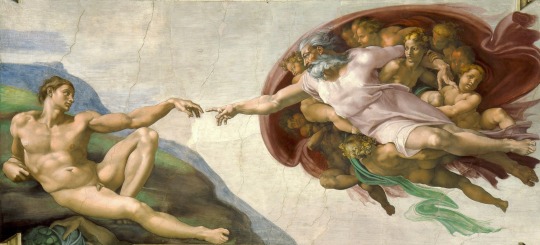
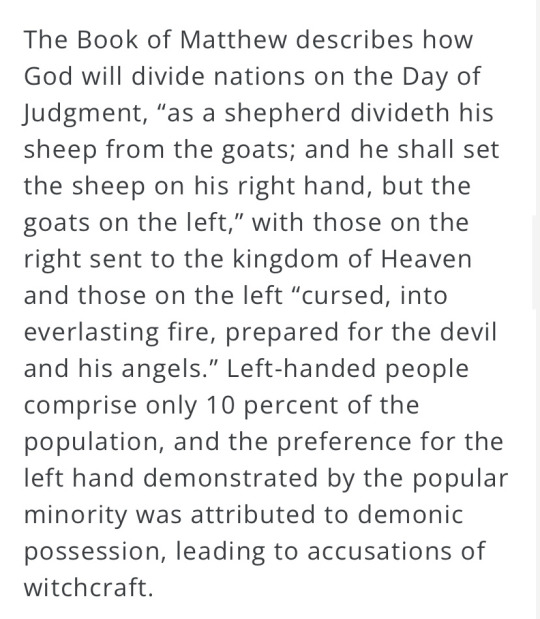
You may notice that in Christian iconography, God is often depicted with significance to his right hand- the “right hand of God” being his favored hand, and his left hand is the hand of judgment (The Archangel Gabriel is also known as “God’s left hand”). This is seen most clearly in the parable of sheep and goats, where the sheep are on his right side will “inherit the kingdom of god,” and the goats on his left are the fallen souls who will “depart from me… in everlasting fire.” The “right hand of God” is also used as a metaphor for his omnipotence.
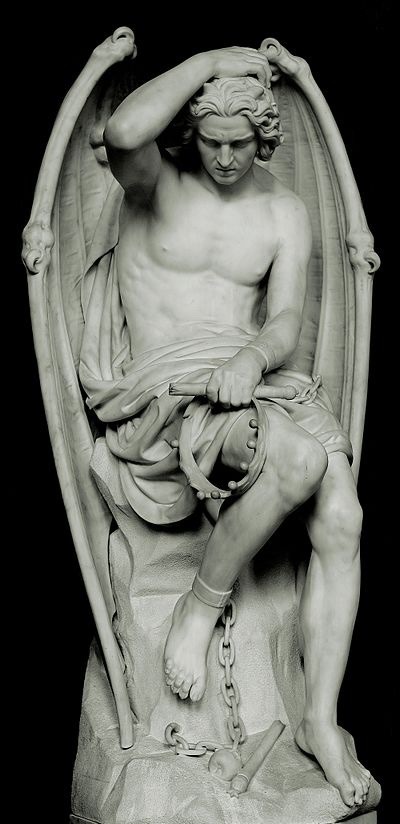
This is where the Devil being associated with the left hand begins to grow. You’ll often see in art (such as cartoon or in movie cinematography) of an angel and Devil being on someone’s shoulder- and the devil is nearly always on the left- because it was believed evil spirits and even the Devil himself watched over one from the left shoulder. Some believed in the 17th century that the Devil “baptized” his followers with his left hand. And in the infamous statue of “Le Génie du Mal” (The Genius of Evil or the Spirit of Evil), Lucifer is depicted crying from his left eye, and holding a broken scepter and crown in his left hand. Notice the bitten apple below his feet, and how his left hand is also chained!

In western esotericism, there is a concept of the “left-hand path” and “right-hand path.” Right-hand path magic is light magic and associated with good and the right hand. Whereas the left-hand path is black magic, associated with evil, “amorality,” and the left hand. (Important to Note: Although the left-hand path is highly associated with black magic, it is not the same as what the left-hand path is. Many occultists critique this definition, some saying these paths don’t necessarily refers to good or bad magic. It is more the idea of amorality and seeking power and freedom through breaking constrictions, whereas true right-hand path has stricter moral codes and believe in the idea of karma/judgement)
It was even believed that witches greeted the Devil with their left hand. Women who were left handed or even had natural markings on the left side of the body were accused off being a witch during the time of the Salem Witch trials, and burned alive for it.
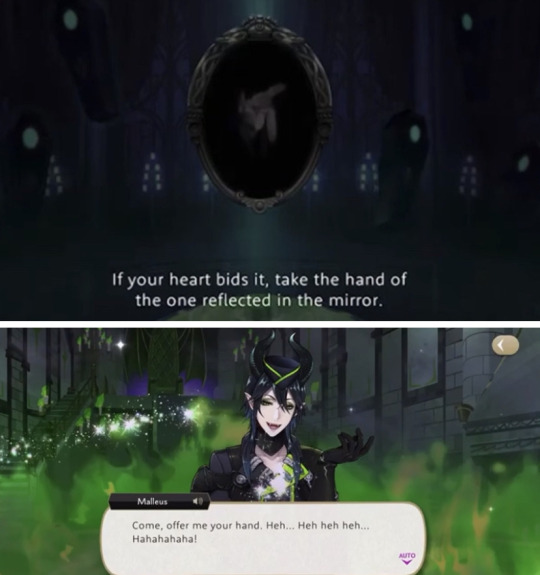
Now that we’ve went over this, what does this ACTUALLY mean for Crowley, Malleus, and the hand in the mirror? Returning to the pin I left earlier, meeting this left handed person is an ill omen, a road to ruin. Crowley and the hand in the mirror are the FIRST scene in the game, with Crowley even saying to take the hand in the mirror. This phrase of his is repeated throughout trailers and the manga.
Malleus is technically never the “first” person we really meet. He is notably absent at the opening ceremony, and even though he makes mysterious appearances at Ramshackle, it’s never really the “first” 🤔 BUT when we look back at Book 7, Malleus is essentially making everyone reborn into a new world without sorrow. And this scene is also where he says to take his hand. With Malleus recreating the world, he is the “first” to introduce you to it, and by taking his hand, it is the beginning of a new journey. Notice how his live 2D model has him using his left hand for magic in these scenes as well!
Crowley’s opening ceremony where he unlocks the coffins to wake everyone up feels very much like a parallel to Malleus being the orchestrator of the dreams- everyone is asleep and can only wake up by his command. We don’t yet know the identity of the hand in the mirror, but I do think it’s interesting that the Dark Mirror is the one who states that the nature of Yuu’s soul is shapeless and colorless.

And and, in official art, Malleus is frequently the one front in center, sometimes directly associated with the hand in the mirror. In this art above, there’s is the idea of the true “happily ever after,” where a crow with a key (Crowley’s symbol) is in front of the Dark Mirror, right above Malleus. All three of them are directly connected with a column of light 🤔
And and and, in Malleus’ Glorious Masquerade card and Crowley’s Raven Jacket groovy, don’t they look like they’re reaching out as a gesture of salvation or mercy? The way the light is always above on them only as they reach their hand out to you…and in Crowley’s card, the perspective is taken from inside the coffin- likes he’s leading you out/waking you from your death or something- even though he looks a bit sinister in his art🤔
Now, this is not to say that I think Crowley and Malleus are evil characters (*゚▽゚*) I do think there is purposeful symbolism with their left hand being an “ill omen” and associated with Devil imagery, but when I think about the left-hand path vs right-hand path, it feels like taking their hand symbolizes both freedom AND the road to ruin. Remember Crowley’s lines in the prologue- they are all running out of time, and Malleus in book 7 is looking for the happy ending. I think the story of Twisted Wonderland is inevitably a story that goes down the road to ruin, but these characters are looking for some hope in this darkness 🤔 Crowley has hope in Yuu and Grim in that they can change everything- and this change will indeed bring a lot of necessary suffering to it for the good of everyone.
I hope what I’m trying to say makes sense! 🤣 I think these parallels are really interesting, but in the end I don’t really know what they mean 🤣 I’d like to hear everyone’s thoughts on this pattern and your interpretation of things- there’s a lot of possibilities that I have never thought of! \(//∇//)\
I’d also appreciate any insight/needed correction for the biblical texts 🤔 I am not religious- so there’s possibly things I missed (*゚▽゚*) I have actually considered reading the full text of some sections of the Bible and such religious texts tho for Twisted Wonderland just because I’ve made several theories by now connecting to biblical lore 😭 One day perhaps- anything for my Crowley theories 🤣 I’d like to cover connections to Faust, Paradise Lost and maybe Dante’s Inferno too one day, so…my reading list is stacking up! 🤣
#twisted wonderland#twst#dire crowley#twst dire crowley#twst spoilers#twst theory#twst crowley#twst malleus#twst malleus draconia#kallistopost
182 notes
·
View notes
Text
Insert Your Name (10)
Mafia!Jade Leech x Mafia!Reader
Link to part one, two, three, four, five, six, seven, eight, nine, eleven, twelve!
Notes and TW: You have a conversation with a "god." This series will have mentions of blood, violence, crime (kidnapping, attempted assassination, extortion), and harassment, as one might expect from a mafia AU. Please enjoy!
Tags: @guava-enjoyer @itszzmoon @twstsandturns @myteacupisempty @rou-luxe @chikitasmol @night-shadowblood-writes2 @haveneulalie @owodi

You thought as much for a while—that this world exists inside a story. This world is created for “(Y/N),” and you are Friend A, according to that manuscript. But after all this time, your own thoughts and Jade’s persistent questioning has led you to doubt it. Jade was the one who said you aren’t a character, that the two of you have “thoughts and feelings that go beyond ink on paper.”
But a god? It isn’t a common word in Twisted Wonderland. The Seven are legends, but they were real mages who lived millennia past. Some religions exist, but they’re mostly local. To see someone proclaim themself as a god before your eyes seems like a joke.
The man notes your skepticism and chuckles.
“I only mean it in relation to your abilities. It will become clear as I explain.” He takes another sip of tea. “Twisted Wonderland is a place made from stories, for stories. Broadly speaking, it is a ‘story setting.’ And my purpose is to make stories come to life.”
You try to make sense of his words. Referring to himself as a god, talking about what he does to stories . . . . “Are you the author of that manuscript?”
“No, I’m afraid you have come to the wrong conclusion. I make stories come to life, but it has been a long time since I’ve penned one onto paper. As for the matter of the identity of the author, you would not have to look very far, as she has spoken to you only moments prior.”
You inhale sharply. Your eyes drift to the window as your thoughts start to whirl. That can only be (Y/N). She was the author all along? It would make sense since she’s the main character. But nothing else adds up. Her odd behaviour, her breakdown, her supposedly lost memories of you. You’re also pretty sure she has never met Jade prior to the events of the manuscript playing out in real life. How could she have written it before that? Furthermore, you don’t believe (Y/N) could ever be the type of person to imagine harm coming to anyone, even in a fictional story, even if it’s to Jade’s parents whom she has also never met.
“To clarify, that person is not the one you’ve known for some time.” He chuckles at your bewilderment. “(Y/N) was a character created to be a placeholder. Tell me, do you recall her appearance?”
“Of course I—” You cut yourself off. The only things you can think of are adjectives. Pretty. Dainty. A messy bun. A slim waist. Gorgeous, sparkling eyes. You can’t even remember their colour.
“(Y/N), which stands for ‘Your Name,’ is a placeholder. A blank space where anyone can insert their name.” The teacup clinks against its saucer. “It is supposed to be a one-size-fit all. However, the (Y/N) you know was created for a specific person. The name that was intended to replace this placeholder is that of a girl who lives outside this story setting—a girl who did not exist in Twisted Wonderland. That is the true author of this story.”
You don’t understand what he means by “placeholder.” But you know what he means by people who live outside your world. You recall the twins and Azul mentioning something similar. Shrimpy. Prefect. That human from their high school days, someone who supposedly came from another world. Someone who did not exist in Twisted Wonderland before coming here.
“Were there other cases of . . . well, people from other worlds?”
“Certainly. Like I said, Twisted Wonderland is a place made from stories, for stories. Seeing as tales of strangers in strange lands are the foundation for many stories, from folklore to modern novels, it is not strange to believe someone could be the protagonist of a story where they are pulled from another world to this one.” He pauses when he sees your furrowed brows. “I must apologize again. I am often chastised for my long-winded deliveries.”
“Yeah, you talk too much. Cut the fluff and tell me.”
He chuckles. “Yes, of course. The most recent prior to this case was one named Yuu, although that character was not under my jurisdiction. Your author, however, is under my jurisdiction. She was a fan of Yuu’s story. Once it ended, she sought to extend the story. Essentially, she wrote a fanfiction, which is the very manuscript you stumbled upon. The setting is Twisted Wonderland years after Yuu's story, and the main character she created is an idealistic version of herself—the person she wished she could be.”
It makes sense why you could only think of positive adjectives when describing her. (Y/N) was indeed, like you’d thought from the start, created to be perfect.
“Day after day, she wished with all her soul to insert herself into that story, to live out that fantasy. Eventually, I heard her wishes and decided to grant them. I gave her the opportunity to enter (Y/N)’s body.”
“You can do that?”
“My dear,” he says pleasantly, “there was a reason why I likened myself to a god from your perspective.”
So they weren’t empty words or narcissism. This man has powers you have never even heard of.
The first thing you feel is a wave of relief. So the person who came screaming at you with the intent to kill was not (Y/N), after all. It was someone who took over her body. A stranger took over the body of your beloved friend, took over her life, her relationships, her autonomy . . . A stranger. The second thing you feel is anger. How dare they. How dare they waltz in and ruin everything? You keep quiet and listen to the man’s explanation, resentment bubbling in your gut.
“So the author abandoned her previous life to enter your world. It came with a few caveats: she must lose her name and run the course of the story as (Y/N). Only after the story’s conclusion would she regain her name. Another caveat was that she did not have access to (Y/N)’s memories. I imagine it was a point of curiosity for you—why she seemed to forget everything about who you are.”
You narrow your eyes. “It wasn’t Walrus?”
“I am afraid not. She has never encountered Walrus.”
Deductions and contemplations can be wrong. You know this better than anyone. Yet, you can’t help but feel cheated. With all the information you had, how could you possibly have known? It’s as though you were blindsided by a truck. Looking back, it makes sense. The elusive identity of the author. How the manuscript contains insider knowledge about events concerning the Leech family. Of course it does, the author was the one who wrote those details into existence. Even her reaction to seeing you on the beach, which must have been her first time meeting you. Of course she was confused when Jade mentioned you to her. You don’t have a name in the story. How could she possibly know the name of Friend A?
“Walrus is a character who ties up inconsistencies from the original plot. I had to work hard to ensure it all fell in line.”
“Aren’t you a ‘god?’ Can’t you just, I don’t know, make it happen?”
He laughs. “I am not omnipotent. I can only influence factors that make the story more likely to happen. As in, I can create ‘events,’ which influence ‘responses and actions.’ Characters are defined by their base character traits and then shaped through events; this is what is called character development. I design and set into motion events that will most likely produce the desired characterization. Notably, I cannot control characters or their emotions. I must say, that young lady did not understand this concept very well. Her events were heavily focused on what her favourite characters could do for (Y/N), as opposed to building a foundation so they would wish to do such things. It was rather difficult to make sure the pieces fell in place so those events could occur.”
Several things connect in your mind like a line of dominoes tipping each other over. The manual first appeared in that attic with no clear origin—he must have planted it there because you, Jade, and Floyd are the only people who enter that room. Jade fell asleep in (Y/N)’s apartment because he was busy to the point of exhaustion after taking up the mantle as the leader of the mafia. (Y/N) did not become Floyd’s mood stabilizer. Jade did not fall in love with her. When she—the author—confronted you on the beach, she blamed you as the reason why Jade would not love her. But that isn’t entirely true, is it? Her “events”—Jade cooking for her, sleeping in the same bed—relies on Jade already having feelings for her. But to Jade, she was a stranger he met in an alley. You understand a crucial fact: actions and emotions cannot be manipulated.
“I admit that I panicked and caused you alarm when I tried to send you and Jade away from that beach. That whole debacle was not an event in the story, so I caused some factors that led to Floyd accidentally breaking one of Jade’s terrariums. It was not a serious emergency.” He grows pensive. “But now that the story has gone completely off the rails, I must figure out how to proceed. The author is quite upset with me, especially since she thought with my help, the story was guaranteed to go exactly as written.”
“You were communicating with her?”
“Periodically, yes.” He sips his tea, looking directly at you. “But she was terribly hard-headed and refused to listen to my words.”
What a waste. She had a god on her side, yet she couldn’t use her brain to take advantage of it? Perhaps it’s your bias against her, but you can’t think well of the author.
“Why did you decide to grant her wish, anyway?”
The man lowers his gaze with a soft smile. “I am a storyteller at heart, and she had a story she desperately wanted to become her reality.”
You grit your teeth. “So what? It’s only made things difficult for everyone. Is that shitty story even worth telling?”
“What do you use to judge a story’s worth? The number of people who read it? The number of critics or fans? These are all irrelevant.” His eyes, though gentle in the warm light of the fireplace, hold silvery clarity and resolution from the moonlight. “All that matters is that one person found enjoyment in it. Even if the only person who loves a story is its author, that story has served its purpose. There is no such thing as a meaningless story. Every writer sets out to write a story for a reason, be it wealth, fame, personal satisfaction, a creative outlet . . . . Why do you think this author wrote hers?”
It doesn’t take a genius. Her obsessive, near delusional insistence that Jade loves her. Her breakdown from seeing the two of you together on that beach. Her malice towards you, perceived to be standing in the way of her love. Of her happiness.
“She wanted to be loved.”
She wrote a story where she could project herself onto a perfect, infallible main character. In this story, her favourite character would love and spoil her. They’d overcome trials and eventually live out their happily ever after, blissfully in love, even past the story she wrote. She wanted to be loved fully, completely, and unconditionally.
You feel a little sorry for her. But if you were to be honest . . .
“Why the fuck should I care?” You slam your hands on the coffee table, glaring at the man sitting across from you. Your hands curl into fists. “I don’t give a shit about her personal life. Jade and Floyd’s parents are in a coma. They’ve been worried sick. And that’s just fine? Because she wanted to live in her little fantasy of being loved? If I believe everything you say, then she’s the one who wrote that assassination into our lives. Without her, Mister and Missus Leech would be perfectly fine and running everything as usual. Jade and Floyd wouldn’t be missing sleep and meals. Jade could go study terrestrial plants and fungi like he’s always wanted instead of working himself to the bone for the mafia. You’re telling me I’m just supposed to accept it just because she’s got a sob story? And even worse, none of this would’ve happened without you.”
The assassination attempt is mentioned in the story as an offscreen event. In order for it to be true, the man across from you most likely manipulated events so that the attempt would be carried out. Just like he’s been doing for every event, all this time.
You want to lunge across the coffee table. You want to wrap your fingers around his thin throat, dig your thumbs into his carotid arteries, punch his nose in. But you don’t. You restrain yourself, your hands shaking on the table. With his abilities, he could easily make your life impossible.
“Fanfiction is fine. People can write what they want. But her fanfiction has very real consequences on my life and the people I care about. Why would you even help her knowing the harm she’s causing?”
Hypocrite, Floyd has once called you. That author is selfish in that she’s chasing her own happiness at the expense of what she considers minor characters. You’re selfish in that you’re ensuring happiness for yourself and your loved ones at the expense of the author, a stranger to you. You’d be a hypocrite for condemning her, but you don’t mind. You haven’t gotten this far by sacrificing yourself for strangers.
“Why, of course.” The man tilts his head as though it’s obvious. “No story can progress without conflict. You are a supporting character, as are the main male lead’s parents. Forgive me, but such characters are expendable for the purpose of the plot.”
It suddenly dawns on you. You should’ve realized sooner. This man doesn’t see you as a person. He only sees you as another character within a story, a particularly troublesome one who has messed up the plot beyond repair. You might wholeheartedly believe yourself to be a fleshed out human being with thoughts, feelings, and everything else, but he will always think of that as you being a character. His powers and knowledge of the world make him vastly different from you. He cannot talk to you on equal terms.
It’s like if an ant gained sentience and spoke to a human. Even with the ability to communicate perfectly, the ant would never be able to understand why humans enjoy roller coasters or haunted houses, no matter how much either side tries to explain. Similarly, you would never understand this man’s desire to turn stories that are destructive to “characters” into reality. So, you won’t try. You’ll work with his rules.
“I may have a solution to the derailed plot.” You look at him with determination quietly burning in your eyes. “It’s pretty simple if you can do it. Make me the main character.”
#twisted wonderland#disney twst#twst x reader#jade leech x reader#mafia au#multi chap fic#finally got to this chapter#this chapter is the reason why I wrote this story fr#i hope it makes sense
69 notes
·
View notes
Text
Still Buzzing About Beelzebub


I wanted to leave this at vague blogging but fuck, man, I can't leave it be. I have a special fondness for Beelzebub as a folkloric figure, and I can't help having very intense personal feelings about how he's adapted. So I'm going to blather about the Lord of the Flies for a moment, and there's nothing you can do about it.
Ok, so, extremely oversimplified spark notes version of Beelzebub's history as a demon concept: there was a god named Ba'al who was worshipped by a rival religion to the Israelites, with "Ba'al" meaning "lord." It's theorized the full name of the god was "Ba'al-zebul," which would roughly mean "Lord of the Heavenly Place." Like many other demons, Beelzebub began as a satirical take on a rival religion's god - in this case, Ba'al-zebul becomes Ba'al-zebub, which means "lord of flies." It's a pun, and, like, a grade school playground level taunt. "Haha, your god's not the god of heaven, he's the god of shit-eating bugs!" basically.
Ba'al-zebub eventually evolves through translation into Beelzebub, and by the point it does it's gone from a petty mockery of another god to a major figure of Biblical apocrypha. In fact, when it comes to figuring out the "real" name of The Devil, Beelzebub has probably the second best claim to it, being not only one of the first devils ever named, but also one of the first ones to be listed (by apocryphal sources) to being the leader of the fallen angels - his only real competition is Belial, who might beat him out in terms of seniority on these points, but with folklore this old it's kind of hard to say someone's a clear winner in this sort of thing.
While other devils would later gain more popularity for the position of The Devil (Lucifer and Satan being the frontrunners despite the former being a result of a translation error and the later being more akin to a title than a name proper - "Satan" isn't too far from "Prosecuting Attorney" in its original usage), Beelzebub has always remained pretty damn prominent, often being The Devil's close second in command or at least in his inner circle, such as in works like Paradise Lost and Marlowe's Faust.
Perhaps his biggest claim to demonic fame, especially in recent years, is his position as one of the Seven Princes of Hell, being one of the elite demons to not only rule Hell, but also represent one of the seven deadly sins. Beelzebub is generally placed as the ruler/representative of Gluttony, though occasionally he's repurposed as the demon of Envy instead.
Ok, cool, so why do I have my hackles up? Well, there's an internet cartoon that's set in Hell with a great deal of buzz about it in animated circles, and they've been dipping their toes into demonology now and then. And apparently this is their take on Beelzebub:
youtube
It's... it's a fucking fox. It's just a fucking fox. I mean, ok, it's got fairy wings and second set of arms and, like, a tail made of honey, but still... it's just a fucking fox.
Here's the thing about Beelzebub: the name "lord of the flies" is fucking unique as demons go. It's descriptive, it's different. Most stories that make Beelzebub distinct from The Devil take the opportunity to make his title very literal, because by doing so they make him distinct from his fellow devils - and as a result, Beelzebub tends to be really fucking memorable.
Like, here, look at some of his peers in the Infernal Dictionary;

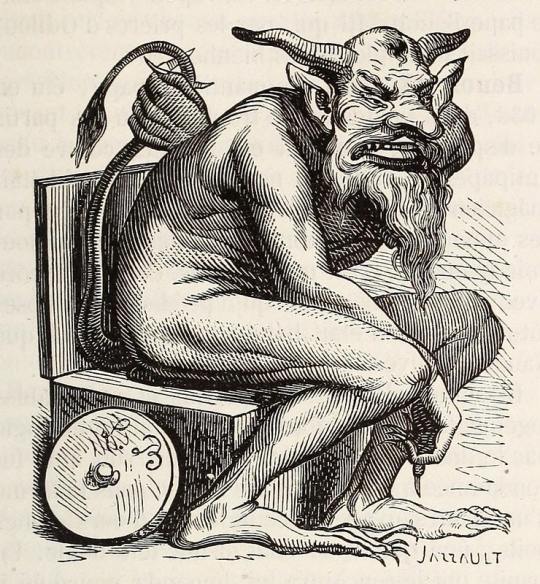
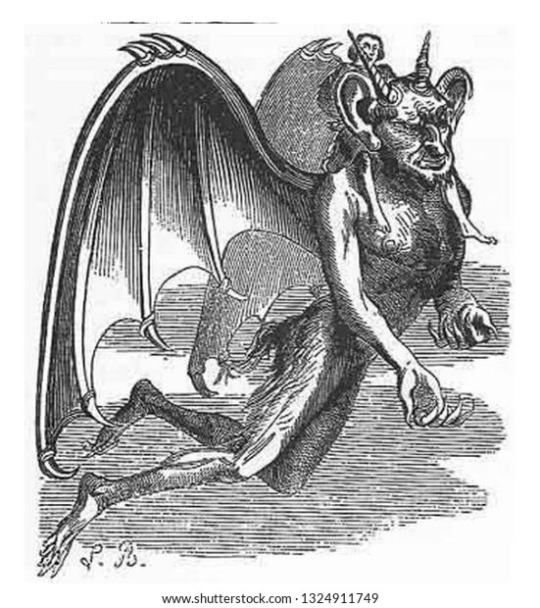
They're all beautifully illustrated, but most (not all) of them are pretty much what you expect when you hear about a classical demon: hairy goat guys with some dragon features mixed in. But then you get the guys like Beelzebub:
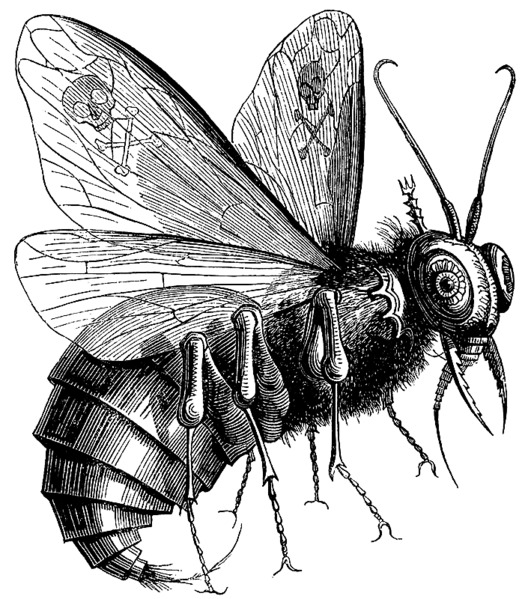
And that hell-fly stand out. He still fits with his peers - the antenna evoke horns, he's got subtle reptilian features like scales and just a bit of a serpentine quality to his abdomen/tail, but in a sea of goat men, he stands out as the only big ass fucking bug guy.
Because that's his thing! He's the bug guy!
Now, this isn't a question of mythic accuracy, because that's a fucking laughable concept, because assuming there's one version of a myth that can be held above all others as "canon" is such a foolish notion in of itself, especially for a character who started as just a satirical nickname for another character and only evolved into his own entity later. Plus there's the fact that, historically, portraying Beelzebub as something other than a big buy monster has been done a lot of times. One early description of Beelzebub goes as follows:
"...a swollen face and chest, huge nostrils, horns, bat wings, duck feet, a lion's tail, and a covering of thick black hair."
Which might look something like this:

And you know, that's not unworkable. A lot of demons have similar depictions - hell, just look back at those Infernal Dictionary depictions. A guy like this wouldn't be out of place with them. But, like, he also wouldn't stand out. It's not that being a big bug is the "accurate" take on Beelzebub - it's that it's the interesting one.
Look at that video again. This is a setting that already has a metric fuckton of canine demons in it. That song and dance number is mostly filled with hellhounds. Why make Beelzebub yet another canine? What's the reason for it, other than laziness or, like, artistic cowardice? 'Cause, like, not to be judgmental of a subculture I'm not a part of, but there seem to be a prominent number of furry artists who, as creature designers, just cannot come up with good designs for non-canine creatures for the life of them. It just feels like a person who looked at the myths, wondered "how on earth can I turn that into an early 2000's deviant art OC covered in hot topic paraphernalia?" gave up after half an attempt and just drew a rail thin emo raver fox girl because that comes to them like swimming does to a duck.

But I think if "emo raver scene party girl circa 2003 Beelzebub" is your character design pitch, you can do that AND make the Lord of Flies look like a big fucking bug. Maybe even work in some body diversity into your series full of rail-thin Johnny the Homicidal Maniac knockoff fursonas. It's Beelzebub, dammit, she has a right to stand out a little!
...
Ok, all this said, one criticism I've heard leveled at the Lord of the Honey-Fox-Fairies here is that the representative of Gluttony should be fat, which a lot of people rightfully pushed back against as being fatphobic. Which, to be fair, it is. But it's also a misunderstanding of Gluttony as a sin, which this take on Beelzebub is ironically also guilty of.
Gluttony is not simply eating a lot of food. Gluttony is the waste of resources that others could use. A person who orders a shitload of food, takes one bite, and throws it all away so no one else can eat it is just as gluttonous as a person who eats every last morsel - perhaps even moreso, since even they don't get use out of the food in question. In recent years the Catholic church classified pollution as part of the sin of Gluttony - because by fouling rivers and bleeding farmland dry with fertilizers, you are wasting valuable resources the world needs. Gluttony is less about what you consume and more about what you keep others - specifically others in need - from having access to.
What's depicted in this song isn't gluttony, because no one in this song is starving. Nothing is being wasted, no one is kept hungry for the sake of the selfish. There's a scene where Beelzebub actually gives a person MORE food, which is... it's literally the opposite of what gluttony is! Gluttony does not feed the hungry - gluttony keeps them starving! That's why it's evil!
In many ways this song is more a depiction of the sin of Lust, which is similarly misunderstood. A lot of people reduce it to "wanting sex," but lust is specifically about pursuing pleasure so selfishly that you neglect your duties to yourself and others. Drinking to self-destructive excess is not gluttonous, it's lustful. Eating sugary candy that has no nutritional value and makes you less healthy is lustful. This whole display of gratuitous self indulgence that the song focuses on - and that fact that said self indulgence hurts the people choosing to partake of it - is the definition of lust.
It's all a very shallow and poorly thought out take on the seven deadly sins and Beelzebub himself, and that's pretty disappointing from a piece of media about Hell that's so strangely popular. But hey, at least Good Omens got the Lord of Flies right.
375 notes
·
View notes
Text
Gubat Banwa: THE SULTANATE OF AKAI

LUNAR KNIGHTS. CHIVALROUS POETS. FAITHFUL PANDITA. One of the most powerful mahamandalas in Gubat Banwa, conquering in their Divine Striving for Goddess, is inspired by the various Sultanates of Southeast Asia! STRIVE EVERMORE FOR GODDESS: AKAI!
While Akai is host to a huge number of religions, their culture and allied polities are skewered through with belief and utmost reverence for The Most High Baginda, BAGINDA SUMONGSUKLAY, which is not her name but a descriptor as the Crescent Moon.
Akai reverses the use of God and uses "Goddess" instead. They are a primarily matriarchical culture, and they believe that Goddess lives on the Moon. The Moon is the most important thing in the universe: it is the hole that leads into the True Space of Goddess.
Akai is intensely researched and inspired by popular Postclassical Southeast Asian societies: Malacca, Johore, Maguindanao, Sulu and more. They are raiders far and wide, and fight so that all of Gubat Banwa will know of the providence of Goddess.
Their faith, AGMA DAMLAG, is inspired by Southeast Asian Islam, which is skewered through with mixtures of local folklores and legends, making it different from "pure" Islam. It is filled with mysticism, jinns, and devil dancers.
Their Disciplines are focused on overwhelming and protecting, on defense. They are the unbreakable ones, after all! They are also inspired by Islamic Chivalry notes: it is the Sultanates that house the most court romance, poetry, and chivalry.

BEAST HUNTERS are those that turned the common profession of hunting in the Isles into an actual martial art. Out of necessity: Beast Hunters are quick and debilitating. According to their Faith, they cannot allow their dogs to bleed the prey before they do.

the MARTYRS are warriors that go into battle in a fierce death battle trance, always ready to die for their convictions. they get stronger as the fight goes, and their techniques let them strengthen their attacks, throw their giant weapons, go into holy rage, and wield juru pakal

SARIMANOK KNIGHTS are true chevaliers who wield the strength of the sarimanok--a revered omen bird that is integral to many cultures of the sword isles--to punish and smite those that would force them to kneel! they can fly upon sarimanok, or be imbued with the holiness of one

STRIFESINGERS sing the grand dirge of Gubat Banwa, as it revels in violence. they are constantly singing: they have a burst 2 aura that constantly heals and gives buffs, and they can put down grand songs that manipulate allies and the battlefield!

warriors that summon the knights of the sea: churning the waters with swordfishes and sharks are a common element in seasian folk tales. the swordfish cavalier is the purest representation of that, allowing them to manipulate water, turn into water, or summon the moon
All of these and more in our KS. Back us now and help us get more art and writing for this grand mahamandala!
Just as important: in solidarity with our colonized and oppressed peoples in Palestine! From the river to the sea, Palestine will be free! Check out this ongoing fundraiser that has over 250+ games for Gaza!
89 notes
·
View notes
Text
Thinking about trolls (+elves, huldufólk, others) in light of Eduardo Vivieros de Castro. I'm not willing to say that pre-Christian Scaninavians were perspectivists in Amazonian style, but I do think that looking at Norse religion and later Nordic folklore through that lens is productive.
I'm mostly using the word troll as kind of a catch-all (which is not unlike how Scandinavian folklore uses it, though Icelandic folklore does not).
There are two main fears concerning trolls: that they will eat you, and that they will marry and/or fuck you. In Levi-Strauss's time that might have been seen as symbolically reducible to the same fear, but I think we can learn more by examining them in their distinction.
I dunno that I can summarize Vivieros de Castro's points here, but I'm reading from Cosmological Perspectivism in Amazonia and Elsewhere: Four Lectures given in the Department of Social Anthropology, Cambridge University, February-March 1998.
In western ontology we humans are like animals in that we have bodies, but what distinguishes us is the soul (or the rational mind, or whatever, the details change over time but the point is something distinctive about our interiority), so that for, say, Christian missionaries, "because the spiritual is the locus of difference that
conversion becomes necessary (the Europeans wanted to know
whether Indians had souls in order to modify them)." Sverrir Jakobsson says that Icelanders bought so heavily into the [Christian : Heathen] distinction as the primary ordering principle of the peoples of the world that they had trouble recognizing, or even outright denied, that there was an East-West split in Christianity.
In perspectivist ontologies this is flipped, the locus of differentiation is the body, because the interiority of everything is the same, difference comes from inhabiting different bodies. If you could acquire the sight of a jaguar, you would look at a puddle of blood and see a nice cold beer (but you would also be dangerous to humans, because you would see them as game animals). The resulting anxiety is cannibalism. If everything is the same in underlying essence, it becomes necessary to engage in an active practice of differentiation to avoid eating something that is the same as you. Ritual specialists who can transform into animals are sometimes bad hunters because they are too deeply engaged in this paradox.
The fear of marrying a troll (or elf, whatever) is the fear of spiritual conversion. This is sometimes made explicit: "I don't want to live with elves; rather, I want to believe in my Christ" -- Ólafur Liljurós (note that while this ballad is related to similar ones all over Europe, many of them deal with the protaganist's impending marriage and/or infidelity in some way; this is absent from the Icelandic and it's a purely religious conflict). In Tungustapi, Sveinn doesn't just fuck elves, he also goes to their church (which is a sort of inverted Christian church). He's alienated from the [Christian/human] community. This corresponds to "western ontology."
The other side of this is fear of being eaten. At risk of overthinking things, because being afraid of a scary monster eating you doesn't really seem to need a lot of explanation, I think there are religious/cosmological implications here.
The fear of being eaten by a troll is different from the fear of being eaten by a bear or a boar, because humans also eat bears and boars, we are on the same level with them. You can't eat a troll (we also don't eat wolves, and wolves are trolls' domestic animals, although I guess you could eat a wolf). A semi-human semi-Euhemerized jötunn/troll is associated with cannibalism in Orms þáttr Stórólfssonar. I've written before about the likely etymological derivation of jötunn from a word meaning 'to eat'; previously I said that while *etaną 'to eat' and *etunaz 'jötunn' have a clear etymological relationship, that might not be so a few hundred years later when they have become eta and jǫtunn, but maybe this relationship should be reconsidered.
Eduardo Kohn was once told to always sleep on his back in the jungle, because if a jaguar comes it will see his face and recognize him as a person, but if it sees his back it will see him as prey. To avoid being eaten by a troll you have to get the troll to see you as a person and not as food, you can do this by giving a gift (and initiating a relationship of reciprocity), or else by being more troll-like yourself (maybe even by preestablished kinship with trolls like Egill Skallagrímsson). It's a widely-acknowledge attribute of trolls, at least in Iceland, that if you do manage to get them on your side they are loyal, hence the word trölltryggur 'trustworthy as a troll [=extremely trustworthy].'
The alternate way to avoid being eaten is, of course, to pray to [Thor/St. Olav] to come destroy them with his [hammer/axe]. I don't think this throws off what I'm saying here though, because "extreme violence" is also an option for dealing with humans in a reciprocation-exchange relationship too.
Anyway, my point is that the responses to the two different fears are the exact opposite of each other. You respond to the fear of conversion by never associating with trolls, never falling for the deceit that they are persons like you. You respond to the fear of being eaten by trolls by establishing mutual recognition of each others' personhood.
Contrary to popular belief (which says to never accept any gift from the fey under any circumstances), both of these are represented in folklore. Ólafur Liljurós even presents both of them at the same time, and says it's better to be killed than convert.
There's a big gap in this, which is magical creatures that don't want to eat you but which are still dangerous. e.g., an elf is not going to eat you but you still don't want to piss him off because he'll shoot you with a disease-transmitting arrow. But I think this can get filed along with the fear of being eaten, it's just that because the Eduardos (Vivieros de Castro and Kohn) are themselves talking about cosmological food chains, and I'm working from their material, there's better opportunity for examining trolls that eat people.
150 notes
·
View notes
Text
Ahura Mazda vs Ahriman
-- in a big, bloody fight, Ahura Mazda ultimately wins
-- Ahriman will be conquered, wrapped in chains, and thrown back into the pit he came from
-- originally, Ahura Mazda created the world
-- Ahriman emerged
-- Ahriman could only react
-- when something good happens, Ahriman can respond
-- life is a struggle -- good vs evil, Ahura Mazda vs Ahriman
-- after the last fight, the world will end but will be reborn as a perfect world
-- people will be reborn in their prime
-- messiahs will arise about every 1000 years and try to teach about Ahura Mazda
-- world would become so evil it must end
.
Patreon
#studyblr#notes#history#historyblr#history notes#mythology#mythology notes#myths and folklore#folklore and myths#religion#world religions#world religions notes#western civ#western civilization#western civilization notes#western civ notes#myths#religions#religions notes#religions of the world#ahura mazda#ahriman#morality#morality in religion#world history#world history notes
0 notes
Note
you’re an antisemite transmisogynist who disparages a minority religion. You are trash misusing your power. Shame on you
I have no power
Your accusations of "antisemitism" are because I say *checks notes* "listen to what Jewish people are saying and respect their wishes when it comes to taking from aspects of their culture." Last I checked, that's kind of the opposite? I mean, I probably have done something antisemitic at some point and not realized it -- I'm not Jewish and like anyone with any kind of societal privilege, it's easy to have a blind spot... but I think that's a lesson you need to learn yourself.
What minority religion am I disparaging? I'm trying to figure that one out. Like, if it's religious witchcraft... I am one? Like I practice a form of religious witchcraft myself? That... that me?
I'm definitely trying to figure out what on earth I, a genderqueer nonbinary person who closely works and creatively collaborates on projects with multiple transfeminine people (hell -- with one we stood at each others weddings), have ever done that might be considered "transmisogynist." I am genuinely scratching my head. You know I'm standing in front of the genderqueer pride flag in my office in my icon, right? I'm not saying trans people can't be transmisogynist -- internalized transphobia is definitely a thing some people need to deal with -- but you gotta show some receipts there kid. Cuz this ain't it.
Again, this is all because I said "hey, Lilith is a figure who exclusively comes from Jewish folklore, and some Jewish people are asking you not to appropriate from their closed ethnoreligion. So maybe don't."
I'm going to turn off anon asks for a bit. You wanna come back, put your name on it sweaty.
#witch#witchcraft#witchblr#Ah yes- I the queer person who says don't steal from Jewish people because some asked us not to must be the REAL antisemitic transmisogynis#“disparages a minority religion” -- what the actual fuck XD
56 notes
·
View notes
Note
Hey, if there was someone named James T Kirk in the Camlann apocalypse, would he be able to shoot phasers out of kit bashed hair dryers? What about a Clark Kent? Could he fly? How does the Camlann apocalypse interact with modern myths as opposed to oral traditions?
Hi! So there's an in-universe answer and an out-of-universe answer. In-universe, our gang doesn't know the answer to this question. Telecommunications went down in the first nine days, and stories by their nature are often contradictory, so our gang just don't know enough yet about how this all works to know what it does and doesn't apply to.
Out-of-universe, which is to say the way I write it (and likely something that won't come up explicitly in the show) - the stories have to have been told for the first time orally. They have to be part of an oral tradition that involves many creators and many listeners. The more tellers, listeners and permutations of the story, the more powerful it is. The age of the stories also makes them more powerful, as does their connection to 'the land' - wherever they were first told. They also have to be...organic? They have to have been told for the sake of telling them, not specifically made as a product to be sold.
By all of these rules, anything that was written for a paycheque is pretty much out - which rules out Star Trek and Superman. You can draw a lot of parallels between modern fiction and mythology, for sure, but they do fundamentally serve different purposes and were created for different reasons. A lot of heart and politics went into the creation of Superman, not least combating the rise of fascism. However, he was also created in the first place to sell comic books.
Modern myths that might work better are urban legends - especially older ones that find their roots in the late 1800s or early 1900s. American rural stories about strangers on the road etc. But in that example, again, the age of the story and its connection to the land is always the most important factor. This means that in the US, for example, indigenous folklore and stories are always more powerful than more modern settler ghost stories, and in figurative or literal conflict, the indigenous stories are going to win the toss. Which means that you're a lot less likely to find a creepypasta type creature unless you're in an area that's isolated from any indigenous cultures. Which is obviously going to be hard to find.
*Finally, a note on religion: I do not feel comfortable playing games with real people's real faiths, which is a big part of why we're largely steering clear of religions and religious stories. There's a grey area where religious figures that have also become folk heroes can come into play, specifically leaning on the power they have from folk legend - so Santa, Joan of Arc etc. As a white British woman, I don't feel I have the authority to tell those stories for other cultures. One day I'd love to have a series of mini-episodes where we invite writers from around the world to tackle these subjects. But I'm not going to be the one who writes those stories, because they're not mine to tell.
31 notes
·
View notes
Text
[Running Commentary] Zombies are Zombies: Cultural Relativism, Folklore, and Foreign Perspectives
She obviously started getting into media in Japan, and (from my research into Japanese media and culture), Japan’s movies about zombies are mostly comedic, since due to traditional funerary practices the idea of zombies bringing down society is ridiculous to a lot of Japanese people.
Rina: OP, this you? https://www.tofugu.com/japan/japanese-zombies/
Marika: Counterpoint: Parasite Eve. Resident Evil. The Evil Within.
Rina: Literally all the grody horror game franchises that people forget were developed and written by Japanese people because the characters have names like “Leon Kennedy” and “Sebastian Castellanos”
~ ~ ~
Based on the reception we received the last time we did one of these, the Japanese moderator team returns with another running commentary. (They’re easier to answer this way) (Several of Marika’s answers may be troll answers)
Our question today pertains to foreign perspectives on folklore—that is, how people view folklore and stories that aren’t a part of their culture. CW: for anything you’d associate with zombies and a zombie apocalypse, really.
Keep reading for necromancy, horror games, debunking the Sapir-Whorf hypothesis, Hong Kong jiangshi films, Japanese disaster prep videos, and Vietnamese idol pop...
Essentially, in my story there’s an organization who wants to end the world. They think this one woman in particular, a woman of mixed Vietnamese (irreligious, Kinh) and Japanese descent who spent her formative years in Japan, is the person to do it because she’s (for lack of a better term) a necromancer; powers are semi-normal in this world. She prefers not to use her powers overall, but when she does she mostly talks to ghosts and spirits that are giving people issues. She could technically reanimate a corpse but she wouldn’t because she feels that would be morally wrong, not to mention she couldn’t start a zombie apocalypse in the traditional sense (plague, virus, etc.) in the first place.
(Marika (M): Your local public health officials would like to assure necromancers that reviving the dead will not provoke a zombie apocalypse. This is because necromancy is a reanimation technique, and not a pathogenic vector. Assuming that the technique does not release spores, airborne viruses, gasses, or other related physical matter that can affect neighboring corpses in a similar way, there should be no issue. However, necromancers should comply with local regulations w/r to permitting and only raise the dead with the approval of the local municipality and surviving family.)
M: I think it makes sense for most people of E. Asian descent, including Japanese and Vietnamese people, to find it culturally reprehensible to reanimate the dead. I imagine the religious background of your character matters as well. What religion(s) are her family members from? How do they each regard death and the treatment of human remains? Depending on where she grew up, I’m curious on how she got opportunities to practice outside specialized settings like morgues.
M: It’s true, space in Japan is at a premium, even for the dead. You note that most of Japan cremates, but, surely, it must have occurred to you that if there aren’t that many bodies in Japan to raise…she doesn’t exactly have much opportunity to practice with her powers, does she? I yield to our Vietnamese followers on funerary customs in Vietnam, but you may want to better flesh out your world-building logic on how necromancy operates in your story (And maybe distinguish between necromancy v. channeling v. summoning v. exorcisms).
She obviously started getting into media in Japan, and (from my research into Japanese media and culture), Japan’s movies about zombies are mostly comedic, since due to traditional funerary practices the idea of zombies bringing down society is ridiculous to a lot of Japanese people.
Rina (R): OP, this you? https://www.tofugu.com/japan/japanese-zombies/
M: Counterpoint: Parasite Eve. Resident Evil. The Evil Within.
R: Literally all the grody horror game franchises that people forget were developed and written by Japanese people because the characters have names like “Leon Kennedy” and “Sebastian Castellanos”
R: And yes, the Tofugu article uses Resident Evil and those games to support its theory, with the reason that they are set in the West. But that only suggests that Japanese people consider zombies a Western thing, not that Japanese people consider zombies nonthreatening if they were to exist.
M: Same with vampires - series like Castlevania also use Western/ European settings and not “Vampires in Japan '' because vampires just aren't part of our folklore.
(M: Also, realistically, these series deal with individuals who quickly perish after their bodies are used as hosts for the pathogen in question, rather than the pathogen reanimating a corpse. Although the victims are initially alive, they soon succumb to the pathogen/ parasite and their organic matter then becomes an infectious vector for the disease. It should be noted, infecting ordinary, living humans with viruses to grant them elevated powers, is not only a major violation of consent and defies all recommendations made by the Belmont Report (in addition to a number of articles in the Hague Convention w/r to the use of WMDs) and is unlikely to be approved by any reputable university’s IRB committee. This is why the Umbrella Corporation are naughty, naughty little children, and honestly, someone should have assassinated Wesker for the grant money.)
R: wwww
From what I know Vietnam didn’t have a zombie movie until 2022.
R: Do you mean a domestically produced zombie movie? Because Vietnamese people have most certainly had access to zombie movies for a long time. The Hong Kong film Mr. Vampire (1985) was a gigantic hit in Southeast Asia; you can find a gazillion copies of this movie online with Viet subs, with people commenting on how nostalgic this movie is or how they loved it as a kid.
M: “Didn’t have a [domestic] zombie movie” is not necessarily the same thing as “Would not have made one if the opportunity had arisen.” None of us here are personifications of the Vietnamese film industry, I think it’s safe to say we couldn’t know. Correlation is not causation. It’s important to do your research thoroughly, and not use minor facts to craft a narrative based on your own assumptions.
(R: …Also, I did find a 2017 music video for “Game Over” by the Vietnamese idol Thanh Duy which features… a zombie apocalypse.)
youtube
(R: The MV has a very campy horror aesthetic and zombie backup dancers (which I love, everyone please watch this lol). But the scenes at the beginning and end where people are biting their fingers watching a threatening news report clearly establish that the zombies are considered a threat.)
So at one point, she laughs about the idea and remarks how ridiculous it is to think zombies could end the world. What I’m struggling with are other ways to show her attitude on the issue because I’d assume most non-Japanese readers wouldn’t get why she thinks like that. Are there any other ways to show why she thinks this way, especially ones that might resonate more with a Japanese reader?
R: The problem is this does not resonate in the first place. Your line of thinking is too Sapir-Whorf-adjacent. The Sapir-Whorf hypothesis, otherwise known as linguistic relativity theory, claims that language shapes cognition—that you can’t conceive of something if you can’t express it in your language. This is a very weak theory that you can easily bring evidence against: think of the last time you felt an emotion you had a hard time putting into words; just because you didn’t have the language for it doesn’t mean that you didn’t feel it, nor does it mean that you won’t be able to understand or recognize it if you feel it again. Similarly, it’s not a sound assumption to say that if some kind of subject matter does not exist in a culture, then people of that culture couldn't possibly conceive of it. This excerpt from linguist Laura Bailey sums it up quite well.
M: Just because ghosts may be more culturally relevant doesn’t mean that zombies (or vampires, or whatever) are nonexistent in a Japanese or Vietnamese person’s imagination when it comes to horror and disaster.
R: Really, if anything, Japanese people are much more attuned to how easily a society’s infrastructure can be destroyed by a disruptive force without adequate preparation. Japan is natural disaster central. A Japanese person would know better than anyone that if you aren’t prepared for a zombie epidemic—yeah it’s gonna be bad.
M: Earthquakes, tsunami, typhoon, floods: Japan has robust disaster infrastructure out of necessity. 防災 or bousai, meaning disaster preparedness is a common part of daily life, including drills at workplaces, schools, and community organizations. Local government and community agencies are always looking for ways to make disaster and pandemic preparedness relevant to the public.
M: Might “zombie apocalypse prep as a proxy for disaster prep” be humorous in an ironic, self-deprecating way? Sure, but it’s not like Japanese people are innately different from non-Japanese people. Rather, by being a relatively well-off country practiced at disaster preparation with more experience than most parts of the world with many different types of disasters (and the accompanying infrastructure), it likely would seem more odd to most Japanese people within Japan to not handle a zombie apocalypse rather like might one handle a combination of a WMD/ chemical disaster+pandemic+civil unrest (all of which at least some part of Japan has experienced). Enjoy this very long, slightly dry video on COVID-19 safety procedures and preparedness using the framing device of surviving a zombie apocalypse.
youtube
M: Living in Los Angeles, I’ve often experienced similar tactics. We do a fair amount of advance and rehearsed disaster prep here as well. In elementary school, the first and last days of class were always for packing and unpacking home-made disaster packs, and “zombie apocalypse” simulations have been around since I was in middle school for all kinds of drills, including active shooter drills, like the one shown in this LAT article. The line between “prepper” and “well prepared” really comes down to degree of anxiety and zeal. So, it wouldn’t be just Japanese people who might not be able to resonate with your scene. The same could be said for anyone who lives somewhere with a robust disaster prevention culture.
M: A zombie apocalypse is not “real” in the sense of being a tangible threat that the majority of the world lives in fear of waking up to (At least, for the mental health of most people, I hope so). Rather, zombie apocalypse narratives are compelling to people because of the feelings of vague, existential dread they provoke: of isolation, paranoia, dwindling resources, and a definite end to everything familiar. I encourage you to stop thinking of the way Japanese people and non-Japanese people think about vague, existential dread as incomprehensible to each other. What would you think about zombies if they actually had a chance of existing in your world? That’s probably how most Japanese people would feel about them, too.
#Youtube#asks#japanese#vietnamese#cultural differences#cultural relativism#linguistic relativity#zombies#sci fi#science fiction#necromancy#death#funerary customs#funeral#ghosts#vampires#folklore#natural disasters#disaster preparedness#rina says stan thanh duy#writeblr
230 notes
·
View notes
Text
notes on the craft #1
(feat sources bc credibility and further reading is good! also please discuss these with me below if you want!)
the wheel of the year isn't super historical! especially a lot of the modern rites we have (Hutton, 2008). In fact contemporary paganism as a whole is new and has... not the most reputable origins (York, 1999). What I infer from this is that, since the origins of a lot of contemporary paganism is stretching the truth at best, and downright fictitious at worst, the "tradition" of witchcraft is untrustworthy. there is no doctrine, no guidebook - only suggestions, and you can absolutely ignore them.
lots of articles and videos glamourise witchcraft. there are a lot of (and i mean a lot of) issues within contemporary pagan spaces, in varying degrees of severity (nazis, superiority complexes, cults, a disrespect for others). with articles entitled "How To Use Magic To Get Over Someone You Dated" (vogue, 2019), and tiktoks about "being the strongest witch in North America" (@/mami.onami, n.d), an appeal to witchcraft has been made for people who have been mistreated by society and ache to have power over those who have hurt them. whilst it's true that witchcraft is powerful, if the draw to a religion or practice is rooted in revenge or anger, the practitioner is not going to stay in the craft for long. furthermore, this shallow depiction of witchcraft is the reason why even people who seek out the craft for other reasons may struggle to stick with witchcraft. it's not seen as a part of your being, it's seen as an aesthetic or a tool to control others, and is then discarded when the goal has been achieved or the aesthetic becomes boring or out of fashion.
and finally, hot take: if you're doing all your research from tiktok, or tumblr, or instagram and then complain your craft is not fulfilling, that is why. because tiktok is filled with videos rooted in nothing but myths or beliefs masquerading as facts or science (see here, here [which seems to be referencing a variety of folklore that isn't fae, and generic horror tropes], and here). social media can be absolutely beneficial in your practice, but factchecking is key. contrary to popular belief, rosemary and clear quartz are not substitutes for everything (unless you decide them to be).
#witchblr#wicca#pagan#hearth witch#folk witch#witchcraft#divination#tarot#astrology#paganism#entering my old woman era rn
43 notes
·
View notes